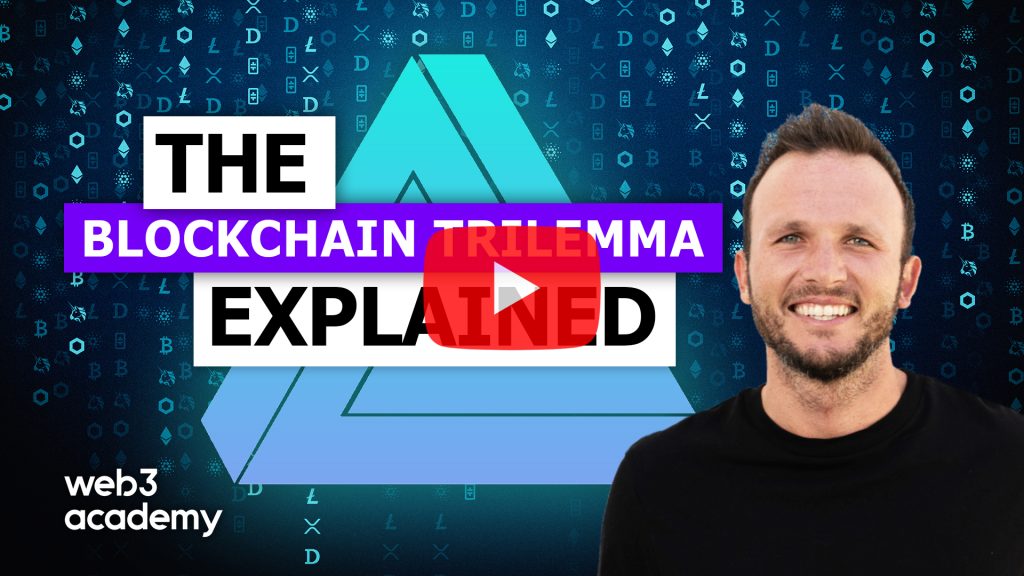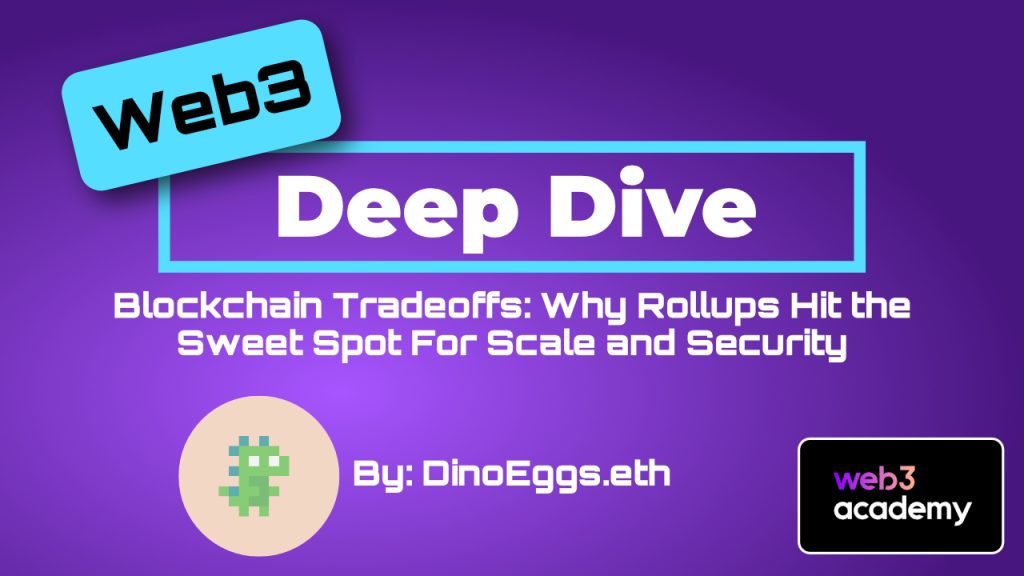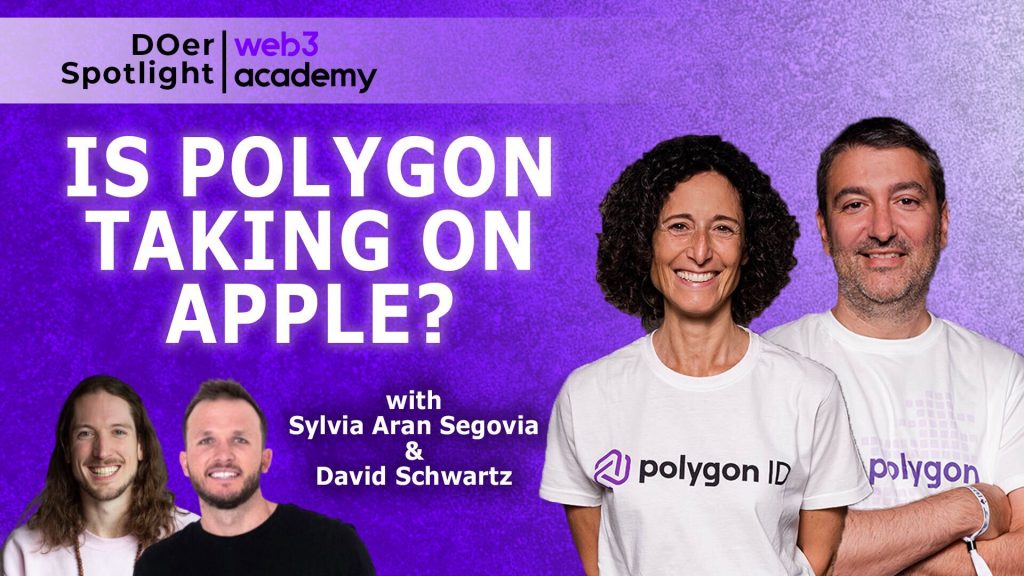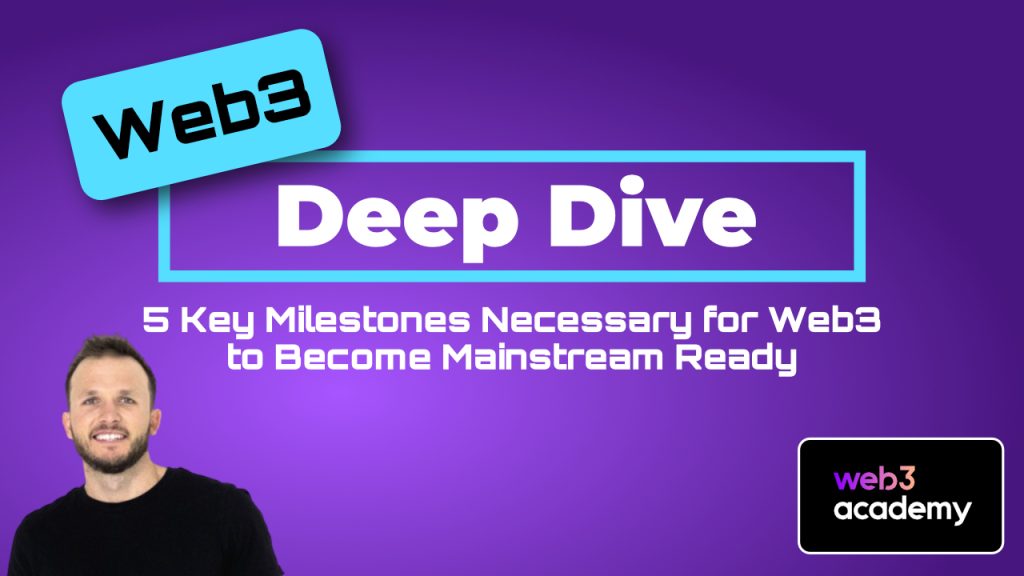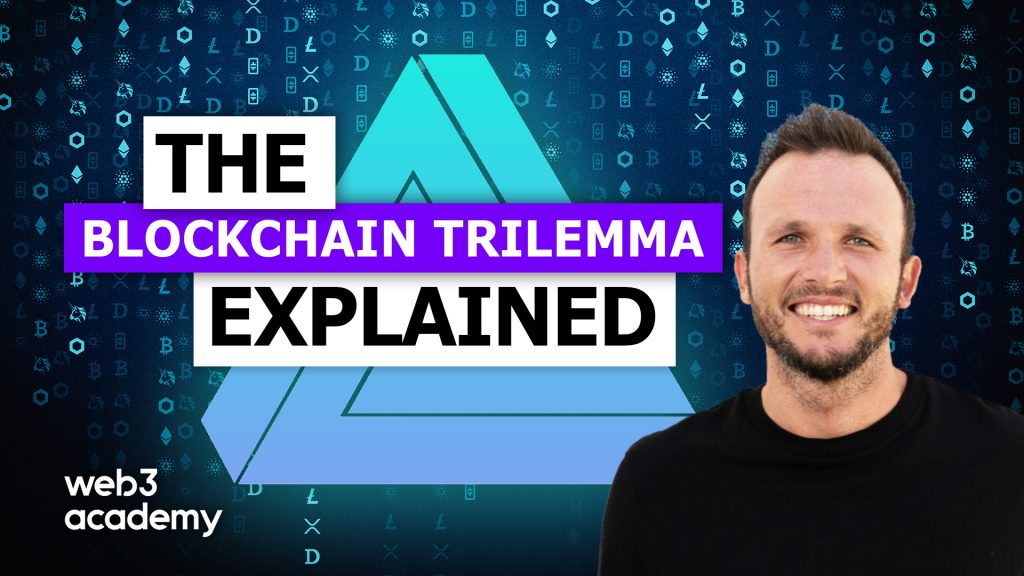
The Blockchain Trilemma Explained
GM DOers!
Web3 is going to reach the masses soon. There is no doubt about that. 🚀
However, blockchain tech is simply not yet ready to support the masses.
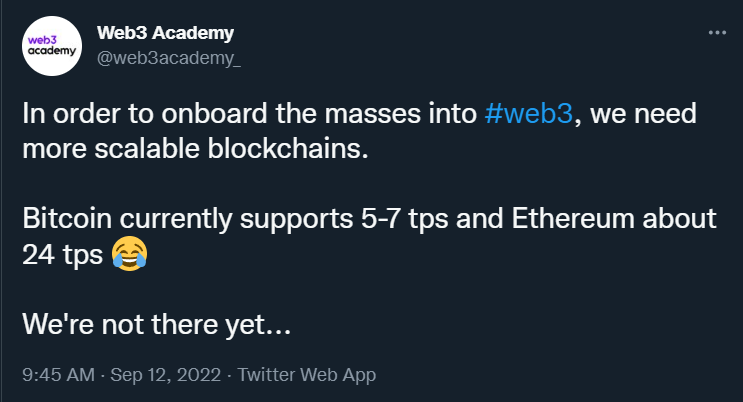
For the promise of Web3 to come true, we need blockchains to support millions of transactions per second (TPS).
Bitcoin currently supports 5-7 tps and Ethereum about 24 tps 😂
Like I said, we’re not quite there.
Scalability on its own is not the challenge, the real challenge is scaling blockchains while also maintaining security and decentralization.
If we can’t do that then we’re back where we started with centralized databases.
Achieving security, scalability and decentralization is an issue that most blockchains are confronting with right now, including Bitcoin and Ethereum.
That is called the blockchain trilemma and is a fundamental problem to crypto and Web3.
The ultimate goal of all blockchain teams (Layer 1s in particular) is to solve this trilemma.
But how do you reach ultimate security, scalability and decentralization under one umbrella, without failing miserably, like so many do?
In this article, I am going to try and break down what the blockchain trilemma is, how it can be solved in theory and how important it is that we indeed solve it.
Let’s jump into it! ✌️
Wait 🚥 Not into reading? 📖
Sit back and watch on Youtube 👀 or listen on Spotify or Apple Podcasts 🎧
What Is The Blockchain Trilemma?
The blockchain trilemma is perhaps the most fundamental problem in crypto and web3.
Let’s start by breaking down the word trilemma:
- Tri = Three
- Lemma = Problem (from Latin)
Trilemma refers to when there’s an argument between three parties which exclude each other. Therefore, only one must be chosen at all times.
In blockchain, the three problems are:
- Decentralization – Consensus is required from more than 1 party (the more, the better)
- Security – Refers to the steps taken to avoid hacks such as 51% attacks (where bad acting miners try to take over a blockchain) or attacks which overload the network, causing it to crash (Ethereum Classic for example)
- Scalability – Mostly associated with how many transactions per second a blockchain can handle so that once adoption occurs, it can keep gas fees low and fast settlements
- For example, Visa processes 60,000 TPS while BTC can only handle 5-7 TPS and Ethereum only 24.
What we frequently see in this space are projects excluding one or two of these components, especially at the beginning.
For example:
Bitcoin is very secure and decentralized but it lacks scalability. The settlement times are long and there are no applications able to be built on top of Bitcoin.
Solana is scalable and somewhat secure but it lacks decentralization. The blockchain can support over 60,000 transactions per seconds (or so they say) but the lack of validators makes the project very centralized.
Same thing goes for all other projects. Achieving one component implies the exclusion of the other components.
So, how can this problem be solved? 👀
How Can The Blockchain Trilemma be Solved?
While we have no real, implemented proof or framework to go after, we can discuss the already existing technologies that could theoretically allow us to solve the trilemma.
There are three options we’d like to break down today:
- The transition from PoW to PoS
- Layer 2 scaling
- Sharding
Let’s go 👇
The Transition from Proof Of Work (PoW) to Proof Of Stake (PoS) Explained
Similarly to what Ethereum is doing at the moment with the merge, proof of work projects can consider transitioning over to proof of stake, something that allows for faster settlements to occur.
However, the biggest unlock of proof of stake is the environmental impact (PoS requires less energy to handle transactions).
You may wonder how that’s relevant to the blockchain trilemma…
Well, right now, the mining industry for Bitcoin and Ethereum is industrialized and it costs a significant amount to be a profitable miner in terms of mining equipment and energy costs, hence why more and more small miners are leaving.
However, thanks to proof of stake , you will only need 32 ETH (which equals $64,000 at the time of this writing) to become a validator. It also requires essentially no equipment (any basic laptop will do) and limited energy resources. This sum is very small in comparison to what you need to become a Bitcoin miner right now for instance.
Not to mention that you can pool your ETH on various protocols (like Rocketpool), where you’d only need to own 16 ETH to become a validator.
Btw, we’re not recommending you to use any protocol!
With this in mind, Ethereum is hoping to become more decentralized in the future thanks to the fact that you do not need a lot of money, energy or hardware to participate in securing the network.
P.S: Validators (PoS) and miners (PoW) have the same goal: to keep the blockchain secured
Now, do not take what’s written here for certain. Things regarding ETH’s transition to PoS are super early and we haven’t had the time and experience to learn anything from this just yet. Nevertheless, Ethereum will create a framework and precedent for PoW protocols transitioning to PoS and it’ll be captivating to watch it develop.
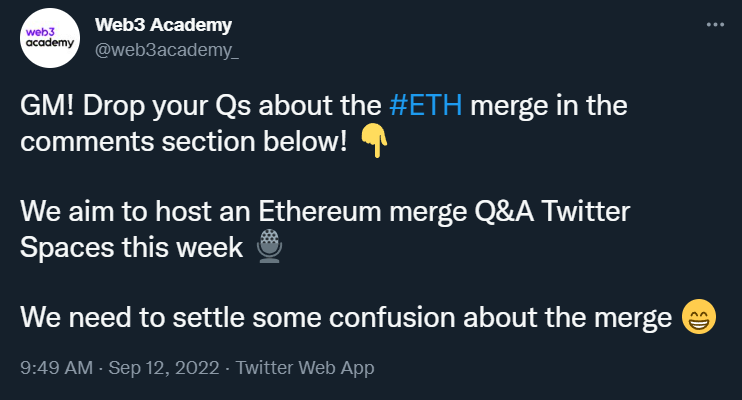
Layer 2 Scaling Explained
Layer 2 (aka rollups) scaling is perhaps the most reliable source through which the trilemma can be solved. Let’s take Ethereum as an example once again…
The main Ethereum network is at the moment very secure and decentralized, thanks to all the miners (soon to be validators) that are active in the ecosystem. However, due to the nature of the network, Ethereum isn’t at all scalable (supporting only 24 TPS). Gas fees are high, settlement times are long and therefore the user experience sucks when using Ethereum.
That’s where L2s like Immutable, Arbitrum or Optimism join the party!
L2s allow transactions to happen off the Ethereum main network in a scalable fashion (Immutable alone supports 9000 TPS and it’s still a very new tech!) while keeping security high due to the fact that transactions are immediately settled on the main Ethereum chain, often in a bundle (rollup) to avoid paying multiple gas fees.
At today’s state, L2s are those which put a patch on the wound called user experience in the Ethereum ecosystem. We, as users, are allowed to mint NFTs, send money and claim airdrops using Layer 2 scaling, avoiding the massive gas fees and long settlements. All thanks to Layer 2s.
Layer 2s turn a blockchain from a monolithic blockchain into a modular blockchain, separating the trilema. It allows for the L1 to focus on security and decentralization only while 100s or even 1000s of layer 2s can plug into and focus only on scalability. The perfect match!
👉 If you’d like to learn more about L2s, refer back to our deep dive where we talk about Why Rollups Hit the Sweet Spot For Scale and Security 👈
Sharding Explained
Sharding is a mechanism which breaks up transactions in pieces (called shards) and settles them in parallel with the main blockchain.
This maneuver allows for multiple transactions to happen simultaneously, making the blockchain more scalable (faster and cheaper).
Today, there are already a few blockchains like Elrond and Zilliqa that have implemented sharding in their mechanism. However, these are projects which are yet to pick up any steam in terms of adoption and their ability to scale is still put under a question mark.
Another criticism towards these projects is often that they are centralized, which is somewhat true but we have to keep in mind that they are super early and nothing is certain right now.
Ethereum’s road map mentions that they are on track to implement sharding at some point in the next few years. If successful, Ethereum will be on the way to become the first blockchain that solves the trilemma.
Quite frankly, right now, Ethereum is secure and decentralized but lacks scalability, something that would be enabled by the implementation of sharding.
The combination of a sharded, proof of stake Layer 1 blockchain with many layer 2s plugging into it seems like the most likely roadmap to solve the blockchain trilemma.
Question: Would you like us to write a deep dive about sharding? Reply to this email with Yes or No 🔥
How Important Is It That We Solve The Blockchain Trilemma?
In order to compete with centralized companies like Visa and Mastercard, we need to be able to match what they are offering.
Blockchains like Ethereum are aiming to become the settlement layer of the internet. This would not only imply payments but also all other activities that we are doing on the internet, which is a massive amount of activity.
This means we are not just taking on Visa and Mastercard, but also Facebook, Twitter, Google and more.
In order for Web3 to support the masses, we need extremely secure and decentralized blockchains that can settle hundreds of thousands or even millions of transactions per second.
We need to not just match the scalability for centralized companies, we need to surpass it while maintaining security and decentralization.
Until then, centralized companies will be able to offer far better services with far better UX!
The bottomline? We’ve got some work left to do before we are ready to onboard the masses. The good news is that we have the solutions in theory and research, we just need time to build and test the tech.

Until then, expect a bumpy road across the space in terms of UX, scale and security.
Thanks for reading, frens. ✌️
Raul Chisluca
Content creator at Web3 Academy and Copywriter & Social Media Manager at Impact Digital Marketing
🚀 Action Steps For Web3 DOers 🚀
👉 Shall we write a deep dive on sharding? Reply to this email with Yes or No.
👉 Refer to our deep dive if you want to learn more about why rollups hit the sweet spot for scale and security
👉 Drop your questions about the Ethereum merge on our pinned Tweet. We aim to host a Twitter Spaces this week to answer your Qs! 🔥

